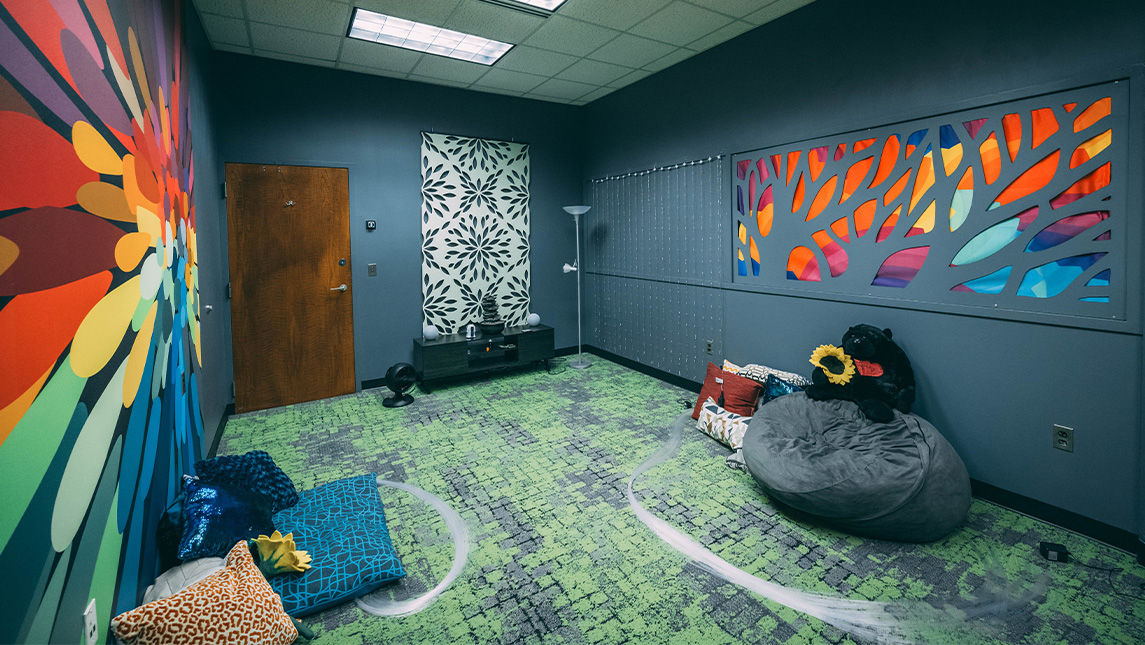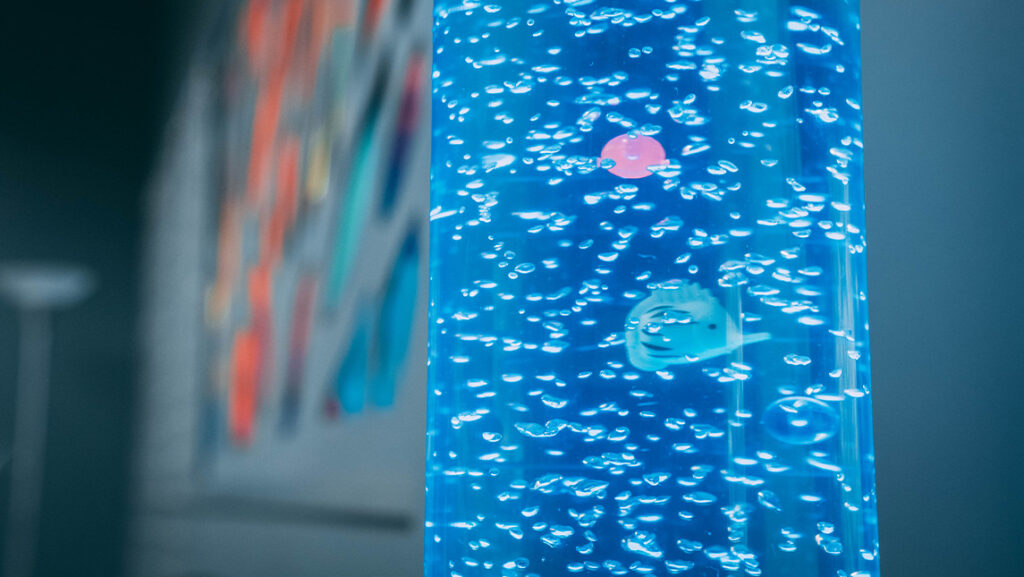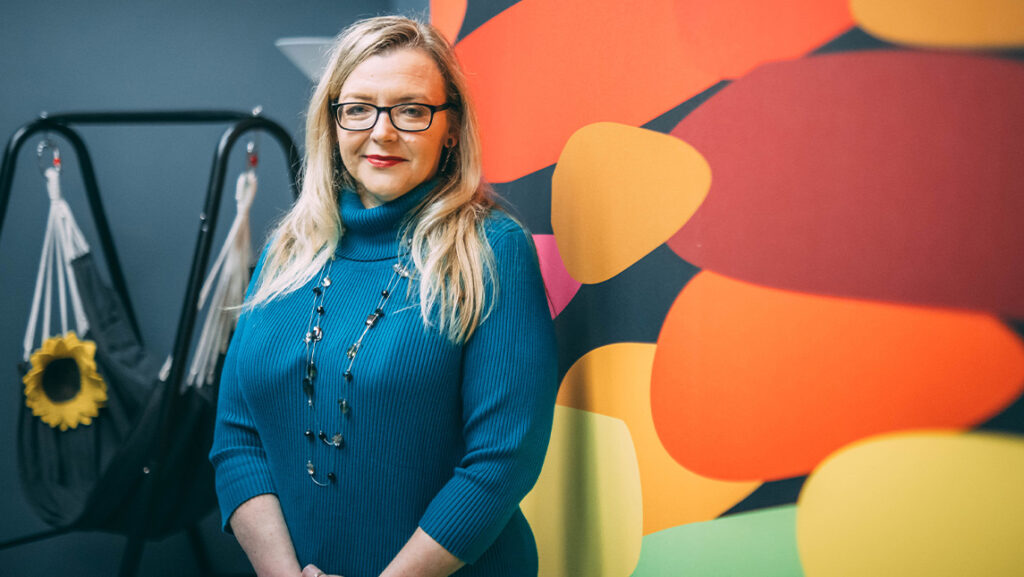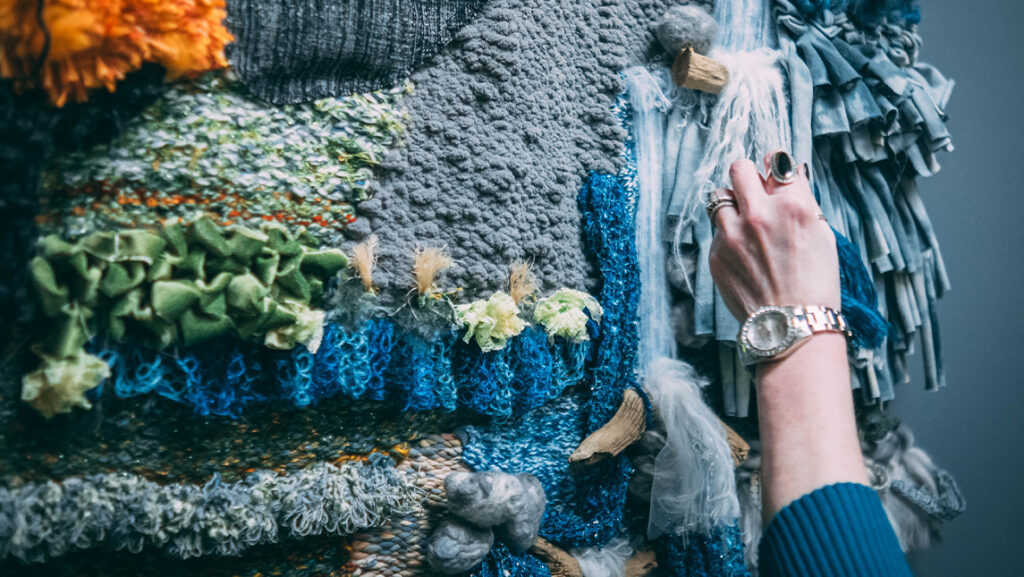Posted on October 11, 2023

Behind the brick façade of UNC Greensboro’s Ferguson building lies a new escape, both for learning and calming: a sensory room.
Lisa (Sears) Williams ‘93 MS, an alumna and current master of fine arts in interior architecture (IARc) student, designed the space in the recreational therapy laboratory as a place for college students to find comfort.
“College was such a transformative time for me where I blossomed and found my passion,” Williams says. “But I started reading about the increase of stress, anxiety, and depression in college students and it just devastated me.”
So, Williams turned to Snoezelen, a company specializing in multi-sensory environments, for how she could bring a sensory room to UNCG for stress and anxiety relief.
In the Ferguson building recreational therapy sensory room, Williams tries to address as many senses as possible: “It’s the feeling of your body in relation to the things around it, and particularly in a space.” There’s artwork, aromatherapy, scarf swings, buttons, fabric samples with varying textures, and sound through speaker devices.



To create the space, Williams conferred with staff in Counseling and Psychology Services and the Office of Accessibility Resources & Services. Williams’s thesis advisor Dr. Amanda Gale, professor, and director of undergraduate studies in IARc, applied for the, “Stantec Innovative Partnership Grant” through the Interior Design Educators Council. Through the grant, Williams got advice from a team of experts at Stantec, a global design firm.
“The IARc department has amazing faculty,” says Williams. “Every single member of the faculty has a niche specialty so anytime I had a problem they were all open and willing to help. My thesis advisor really helped make this happen.”
The room was originally meant to be a temporary space in the Center for Community Engaged Design – an interdisciplinary research center through IARc that focuses on research and design of both built and natural environments. But when the Department of Community and Therapeutic Recreation (CTR) said they had an empty office in Ferguson for the sensory room, another use for the space opened as well – teaching.
“One of the things we will do in this space is teach different sensory intervention techniques for our students,” says Joan Sutton, an assistant professor in CTR. “We are excited to have space for our students to collaborate on projects, share ideas, and practice sensory interventions.”
There are many different forms of therapy. Most people recognize physical and occupational, but few know about recreational therapy. CTR prepares students for work in the world as a licensed and certified recreational therapist. Recreational therapists look at someone’s leisure interests and help individuals get back to doing the things they enjoy.
“Physical therapy will get you out of bed, occupational therapy will get you back to work, and recreational therapy will get you back to doing the things you love in your free time,” says Sutton. “We are going to help you find new leisure interests or ways you can adapt your leisure interest so that you can keep going.”
Before this room, CTR did not have a room to eliminate or control multisensory experiences.
“In the past, we would try to move desks and chairs out of the way in the recreation therapy laboratory but you still have items in your line of sight,” says Sutton. “Having this specialized space is giving our students a better hands on learning experience.”


From start to finish, the room took Williams about a year and half to complete including research and the physical work.
“Lisa was just tirelessly in the room working,” says Sutton. “She did an amazing job, and everybody is so thankful and appreciative.”
In 1993, Williams earned her first master’s degree from UNCG in human environmental sciences. After earning an associate’s degree in interior design, she worked in the industry for more than a decade. It was UNCG’s IARc program that brought her back for a second master’s degree.
“At the time, interior design and my first master’s degree program were under the same school,” Williams says. “I had classes with some of the interior design students, and I knew they had a great program. When I decided to come back, it was really no question.”
Returning to UNCG was the right decision for Williams. Now, when the sensory room is used, it will be her work and her collaborative UNCG education in action – making a real-world impact.
Story by Avery Craine Powell, University Communications
Photography by Sean Norona, University Communications